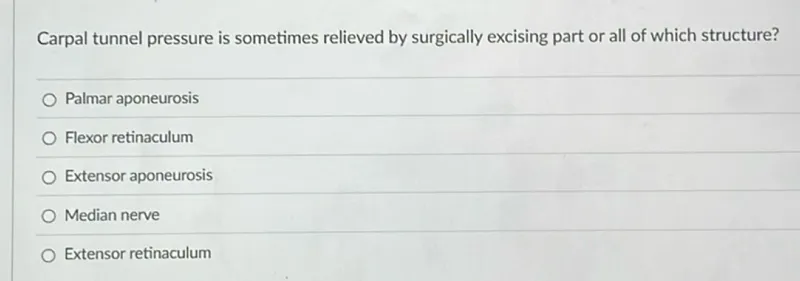Questions: Carpal tunnel pressure is sometimes relieved by surgically excising part or all of which structure? Palmar aponeurosis Flexor retinaculum Extensor aponeurosis Median nerve Extensor retinaculum

Transcript text: Carpal tunnel pressure is sometimes relieved by surgically excising part or all of which structure?
Palmar aponeurosis
Flexor retinaculum
Extensor aponeurosis
Median nerve
Extensor retinaculum





